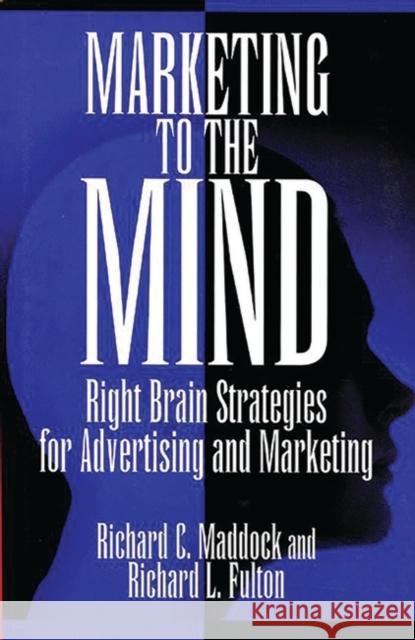Marketing to the Mind: Right Brain Strategies for Advertising and Marketing » książka
Marketing to the Mind: Right Brain Strategies for Advertising and Marketing
ISBN-13: 9781567200317 / Angielski / Twarda / 1996 / 304 str.
Very few books deal with the unconscious mind--the right side of the brain--and how advertising affects and directs it. This one does exactly that. Psychologist Maddock and his co-author Fulton give the readers a clear understanding of how the mind works, based on up-to-date research, and a new way to understand human motivation and behavior. Drawing unqiuely from medicine, clinical psychology, and the practice of marketing, they combine insights and principles that will provide advertisers with almost a blueprint for executing creative strategies and developing marketing plans with a better chance of success. In so doing the authors make clear that marketing to the mind is a diagnostic technique, a way to quickly and inexpensively analyze consumer resistance. With concepts, theories, and research clearly laid out, the authors show how the technique can be applied to a variety of products and services. A practical and engrossing book for the advertising and marketing community, and for teachers, consultants, and students too.
Maddock and Fulton introduce a third dimension to marketing and a completely new marketing theory based totally upon unconscious motivation. Most marketing theory deals with conscious, rational motivators while the unconscious motivators are overlooked or ignored. Marketers often complain that they cannot get beyond consumers' rationalizations. The authors correct this by looking at the right side of the brain--the side of the brain that, according to latest empirical research, has been shown to be heavily involved in the mediation of emotion. "Marketing to the Mind" introduces a new hierarchy of consumer motives, then shows how they tie into product benefits, how they cause consumers to act, and then how marketers can address them. They validate their approach to the unconscious by offering a unique right brain market research technique, and show how it is applied to various consumer activities, such as casinos, food service, cosmetics, fashions, health care--and even to the question: Why do people still visit Elvis and Graceland? (That chapter alone will provide marketers with unusually useful information). Clearly written, authoritative, and simply fascinating reading, "Marketing to the Mind" will prove to be of special value to all those involved in the creation, development, and selling of goods and services.











